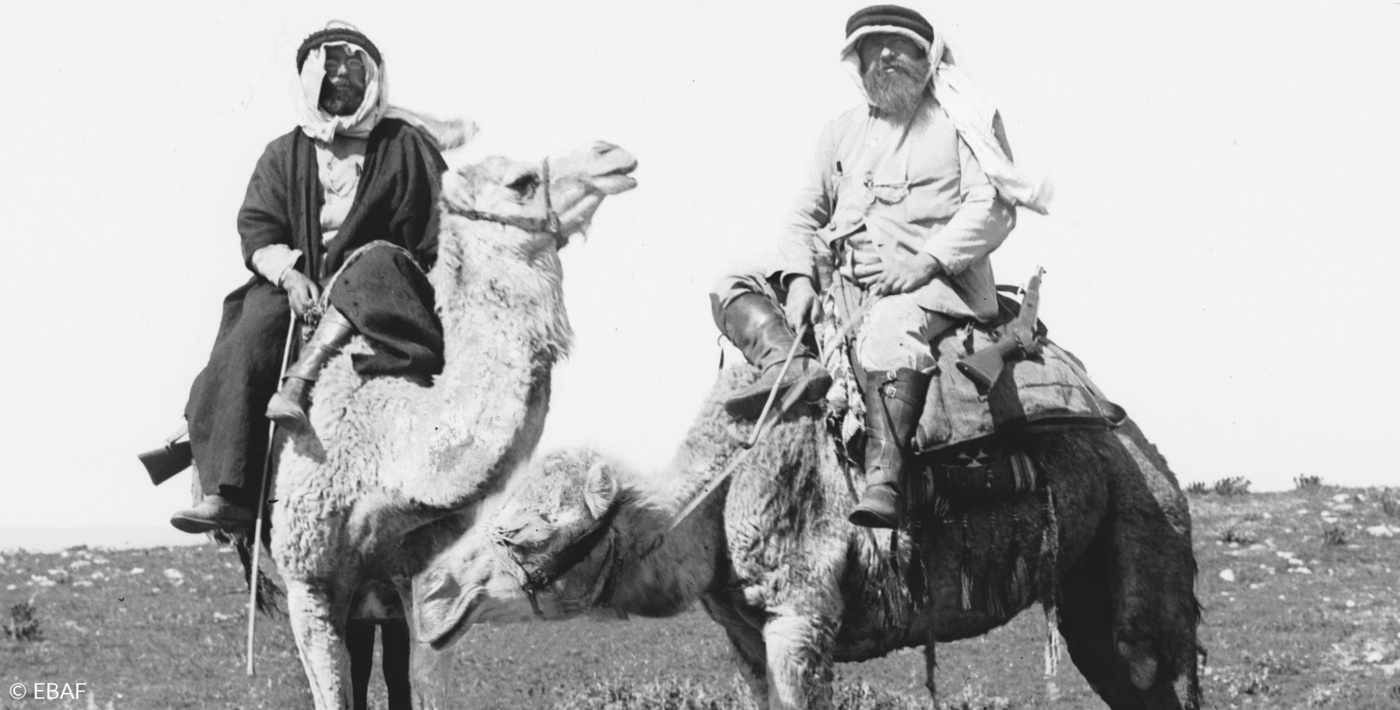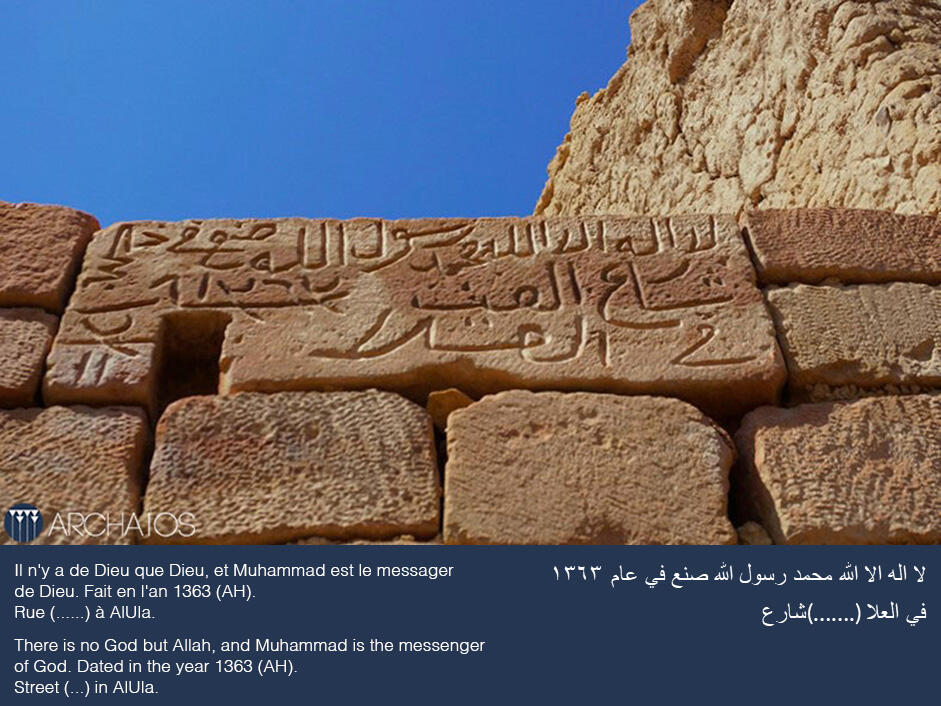The inscriptions of the Old Town of AlUla
As part of its development plan Vision 2030, the Saudi government has decided to highlight the incredible heritage of the AlUla valley and its Old Town. Studied since the 19th century by various scholars, the inscriptions it contains represent a real cultural treasure that this project aims to valorise.

The inscriptions: keys to understand history
These inscriptions are studied within the context of the MuDUD (Multiscalar Documentation for Urban Dynamics) project, developed by Archaïos, coordinated by AFALULA (the French Agency for the Development of AlUla), and financed by the RCU (Royal Commission for AlUla).
The large corpus of inscriptions present in the Old Town is a source of great interest for this interdisciplinary project that aims to decipher its history.
The inscriptions, either in ancient Minaean, Lihyanite or Nabataean, indicate the presence of these people in the valley at some point in time. The stone blocks that were engraved have been used and reused throughout the occupation period of the Old Town, as shown by their location at the time of discovery – a number of them were found within houses, in lower parts of the walls, on thresholds – and position: above or under eye level in the streets, with the inscribed side upside down or barely visible...
The aim of studying these inscriptions is to:
- identify the location of the inscriptions as given in archival documents from the 19th and early 20th centuries and compare them with their current location in the Old Town, as some have moved in the meantime;
- transcribe these inscriptions through the work of epigraphists and analyse the information they give us to enrich the ancient history of the valley.
A remarkable corpus of archives
Several exploratory expeditions to Arabia were conducted at the end of the 19th century and the beginning of the 20th century. Various European scholars traveled to discover and study the past of these regions, which still remained largely unknown in Europe. Many documents were made (sketches, squeezes, photographs, etc.) to preserve a copy of the inscriptions they encountered.
The most detailed epigraphic study of the AlUla valley remains that of the Fathers Raphaël Savignac and Antonin Jaussen, of the Biblical School of Jerusalem, who made several hundreds of squeezes during their three missions, in 1907, 1909 and 1910. Partly kept in France at the Académie des Inscriptions et des Belles Lettres (AIBL), these documents form the main corpus of archives to study the history of the region and its inscriptions, most of which have disappeared, been displaced, or been destroyed.
Digital preservation at the heart of the epigraphic study
Today, new digitalization techniques take an important part in the study of these inscriptions.
The inscriptions identified onsite or known through archives are recorded in a Geographic Information System (GIS), allowing to have them all located on one map. By cross-referencing this data, archaeologists can identify which inscriptions are still in place and which ones have been displaced: some were found reused elsewhere while others have not been recovered yet.
Both the squeezes preserved at AIBL and the original inscriptions found in situ (i.e., on-site) are digitalized in 3D through photogrammetry. These digitalizations aim at identifying letters more distinctly and allowing for a better transcription.
A diversity of inscriptions
The size of the inscriptions, their subjects and their scriptures are varied. They bear witness to a long chronology of occupation of the valley, from the Minaean and Dadanite kingdoms (first millenium BC.) to the Ottoman period (18th–20th centuries), until the abandonment of the Old Town in the 1980s.
While some ancient inscriptions attest to a flourishing economy, made possible by the site's location at the crossroads of commercial and caravan routes, the more recent inscriptions, in Arabic, provide valuable insights into the customs of the inhabitants, as well as the urban organization of the Old Town.
For example, the previous owners considered the house doors as emblems. They inscribed blessings for the visitors on the lintel, along with the date of construction of the property.
The valorisation of the inscriptions
The digital corpus of the Old Town’s inscriptions will offer an open-access scientific documentation, ensuring the conservation of the inscriptions and allowing an international enhancement of the data through studies by specialists from all around the world.
This cultural project, carried out in close collaboration between Saudi Arabia and French institutions and research companies, brings a new wave of promotion of the Saudi heritage that will gradually be unveiled to the public through means of publications, exhibits, etc.







